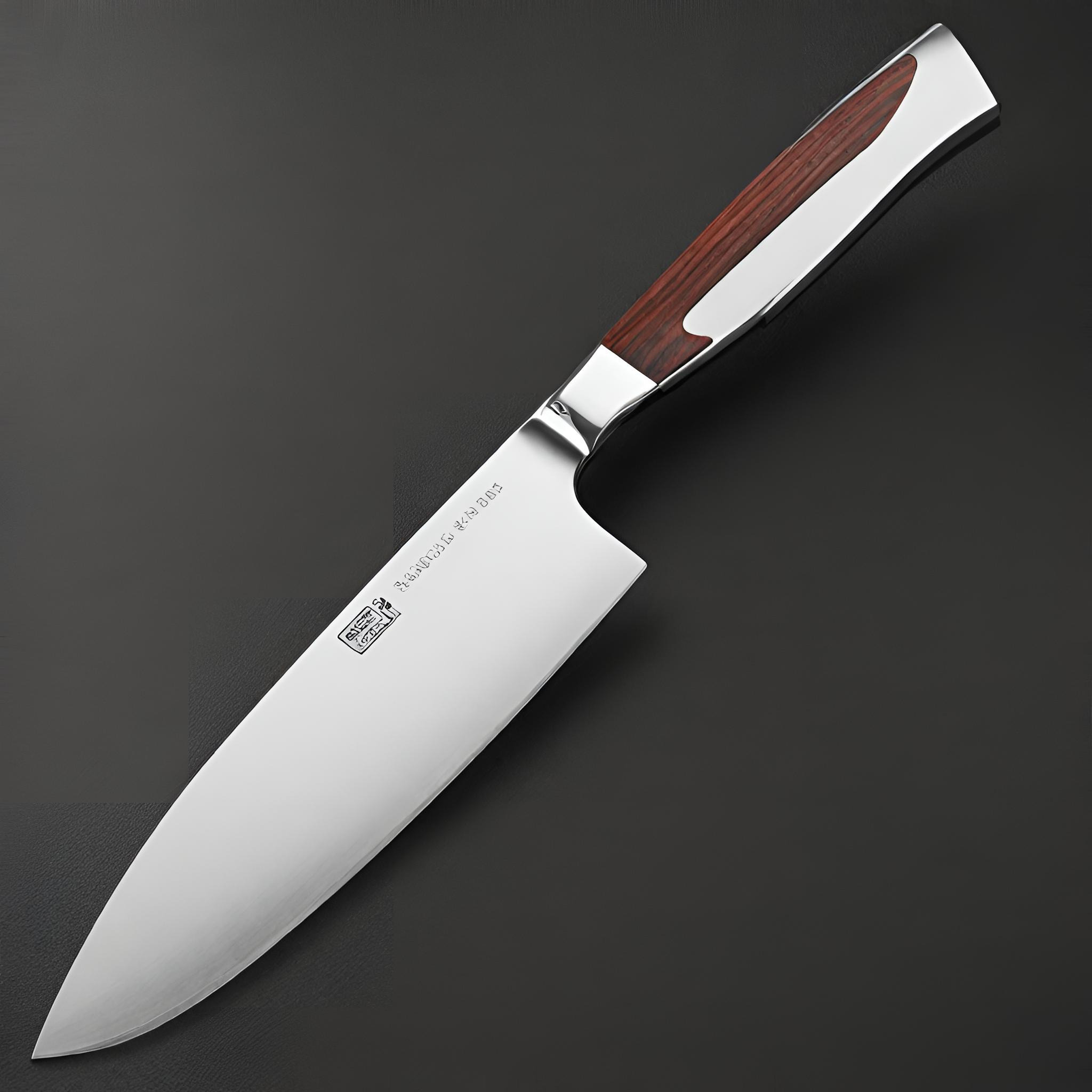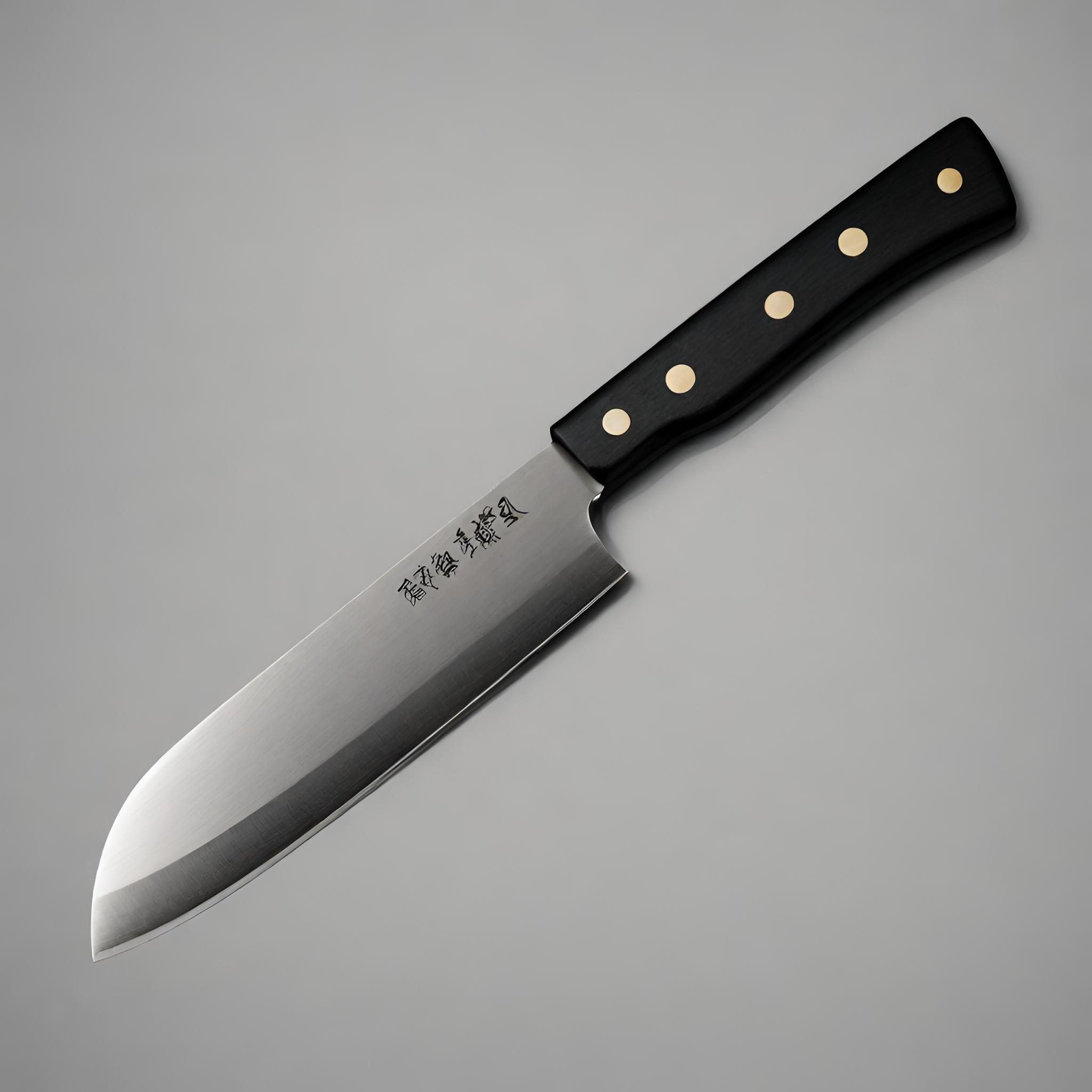In the realm of culinary craftsmanship, the choice of a chef’s knife is a pivotal decision. It’s not just a mere utensil; it’s an extension of the chef’s skill, technique, and culinary artistry. When it comes to selecting the perfect knife, the debate between Western and Japanese chef knives is a longstanding clash of traditions, craftsmanship, and functionality.

The Western Warrior: Sturdy and Versatile
Western chef knives, often referred to as German knives, epitomize durability and robustness. These knives typically feature a thicker, heavier blade crafted from softer steel, offering resilience to heavy-duty tasks. The prominent bolster, a thick junction between the blade and handle, provides balance and a comfortable grip, ideal for tasks that demand forceful chopping and slicing.
Strengths of Western Chef Knives:
- Versatility: Western knives excel in handling a wide range of kitchen tasks, from dicing vegetables to slicing through tough cuts of meat.
- Durability: The sturdy construction and thicker blade make them resilient to rigorous use and accidental abuse.
- Ease of Maintenance: They are generally easier to sharpen due to the softer steel used in their construction.
However, this robustness comes with trade-offs. The thicker blade might not be as precise when it comes to intricate cuts, and the weight could lead to hand fatigue during prolonged use.

The Japanese Katana: Precision and Grace
On the other side of the culinary battlefield, Japanese chef knives stand as the epitome of precision and finesse. Known for their razor-sharp edges and sleek, lightweight designs, these knives are crafted using hard steel, making them exceptionally sharp and capable of retaining their edge for longer durations.
Strengths of Japanese Chef Knives:
- Unrivaled Sharpness: Japanese knives are famed for their razor-sharp edges, allowing for precise, delicate cuts and vegetable slicing with minimal effort.
- Agility: Their lighter weight and thinner blade make them maneuverable, reducing hand fatigue during prolonged use.
- Aesthetics and Craftsmanship: Often considered as works of art, Japanese knives showcase intricate designs and meticulous craftsmanship.
However, the harder steel used in Japanese knives demands careful handling and maintenance. They are more prone to chipping if used improperly or on hard surfaces.
Choosing Your Culinary Companion
Selecting between Western and Japanese knives often boils down to personal preference and the type of culinary tasks one regularly undertakes.
- For Heavy-Duty Tasks: If you handle a lot of dense foods or prefer a sturdier blade for tasks like breaking down poultry or cutting through bones, a Western knife might suit you better.
- For Precision Work: If your cooking involves a lot of precise cuts, intricate vegetable work, or sushi preparation, a Japanese knife could be your ideal companion.
Moreover, some chefs even opt for a fusion approach, incorporating both Western and Japanese knives in their arsenal to capitalize on the strengths of each.
Conclusion
The debate between Western and Japanese chef knives transcends mere functionality; it delves into craftsmanship, culture, and individual preferences. Both styles possess distinct virtues, each catering to different culinary needs and techniques.
Ultimately, the choice between these two culinary titans lies in understanding their strengths, considering your culinary style, and embracing the knife that best complements your skills and preferences. Whether it’s the robustness of a Western knife or the precision of a Japanese blade, both are formidable tools in the hands of a skilled chef, transforming ordinary ingredients into culinary masterpieces.